Abstract
1. The effect of cutaneous stimulation on the firing of single motor units has been studied during voluntary contractions in human first dorsal interosseous muscle. 2. Electrical stimulation of the index finger at 3 x threshold for perception reduced the firing rate of most units recruited at voluntary contraction strengths less than 1.5 N and increased the firing rate of all units recruited at contraction strengths greater than 1.5 N. The firing rate of all slow twitch units (contraction time greater than 75 msec) was reduced. The behaviour of fast twitch units was mixed but at this stimulus strength all units recruited at contraction strengths greater than 1.5 N had their firing rate increased. 3. Tested at different stimulus strengths, the stronger the stimulus the more the firing rate of low threshold units was reduced. The firing rate of units recruited at high contraction strength was increased by weak stimuli but reduced by strong stimuli. 4. It is concluded that stimulation of the index finger shifts the weighting of synaptic input associated with a voluntary contraction to favour the activity of the more powerful fast twitch motor units in first dorsal interosseous muscle.
Full text
PDF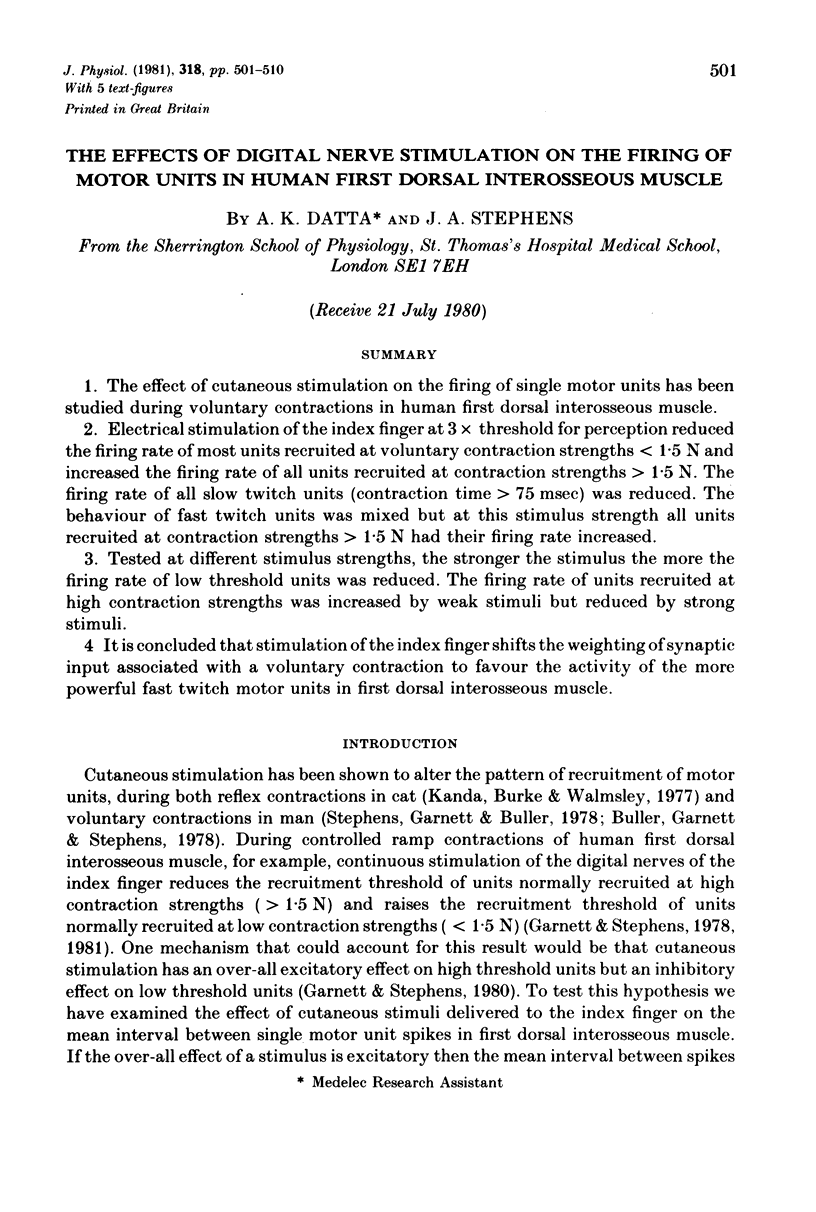
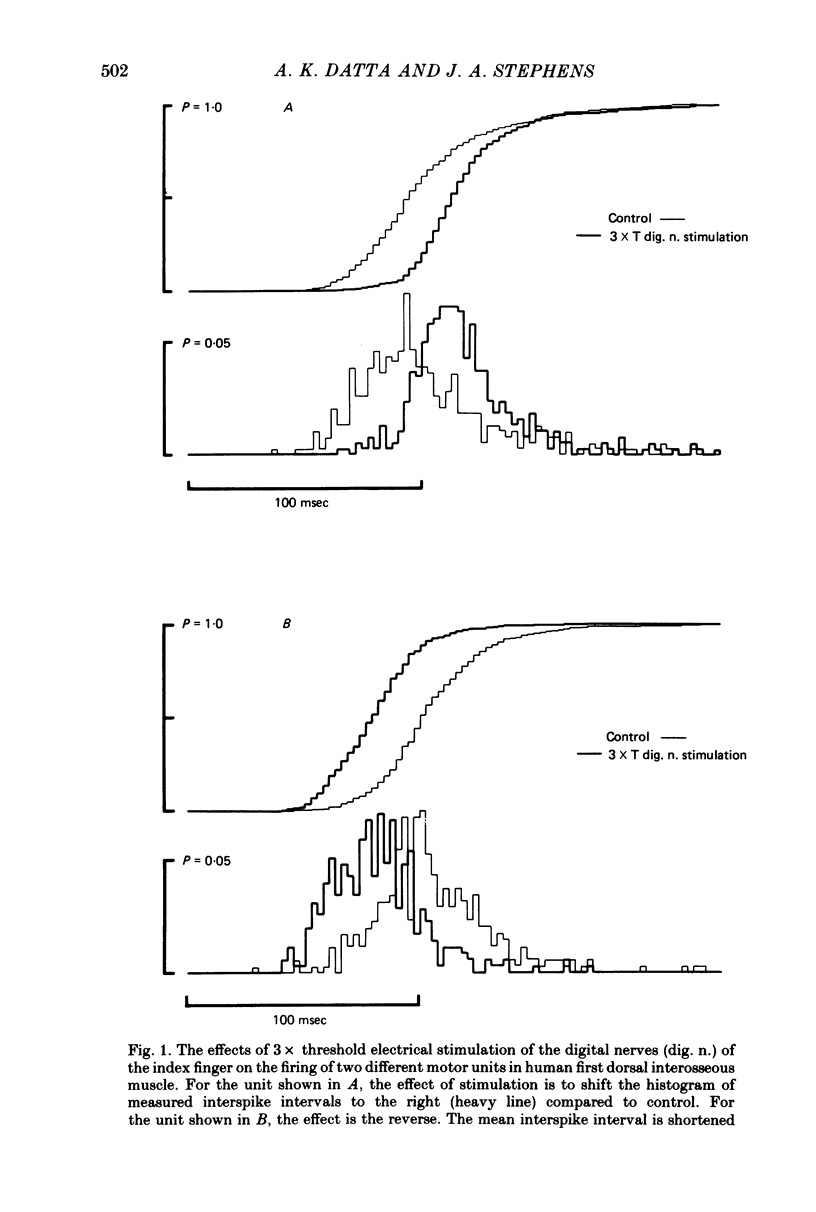
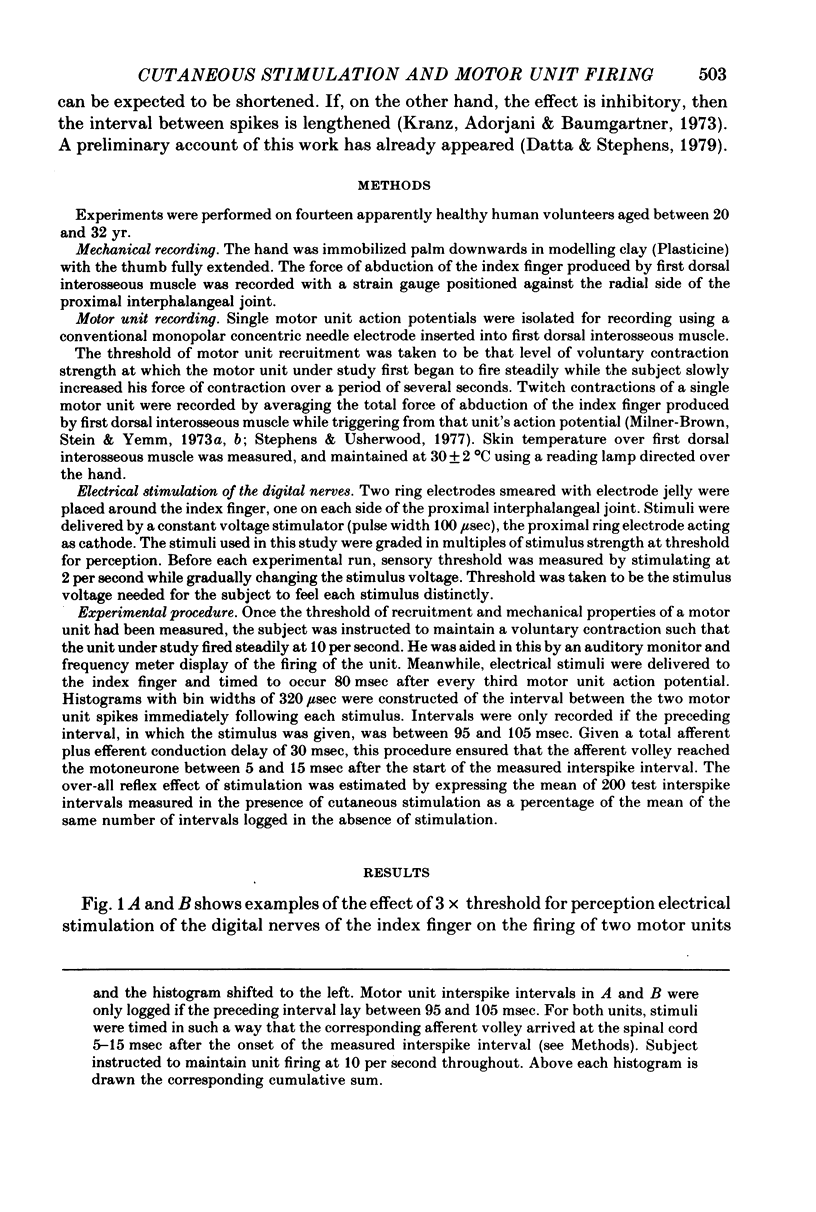
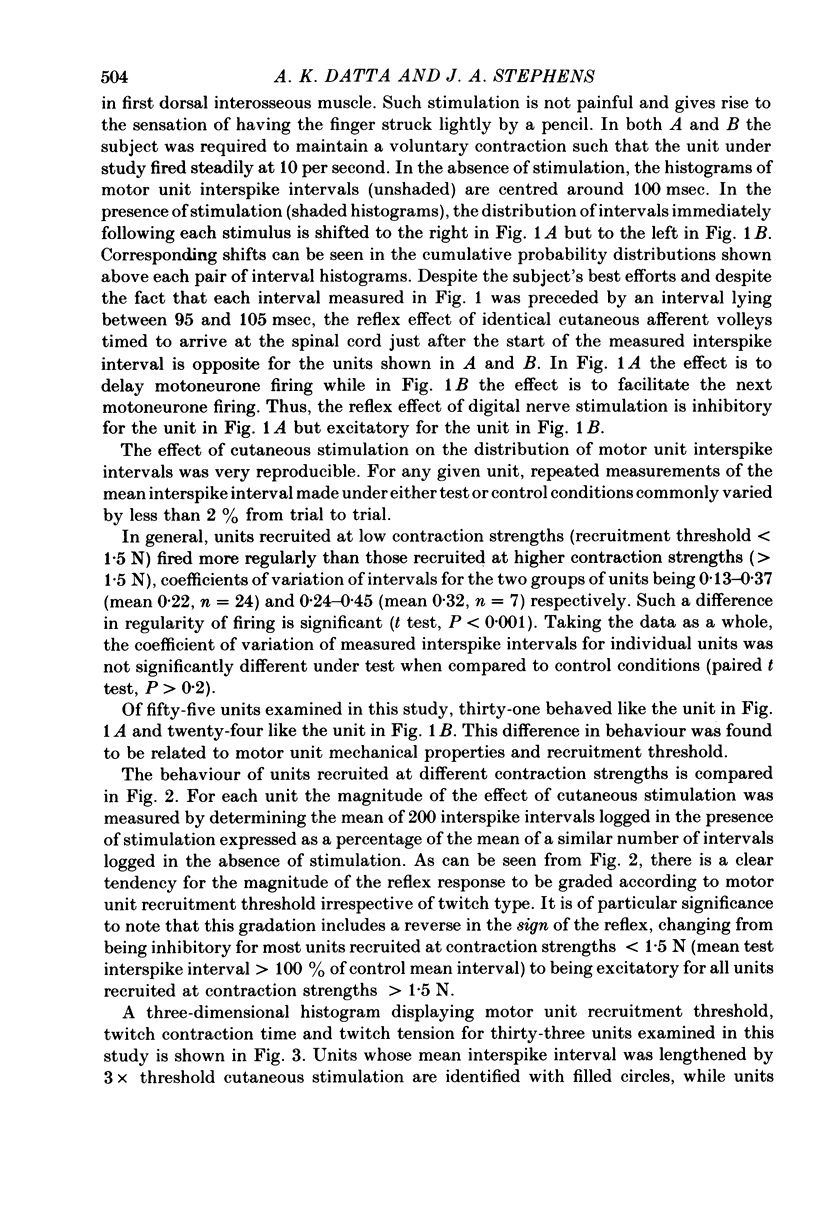
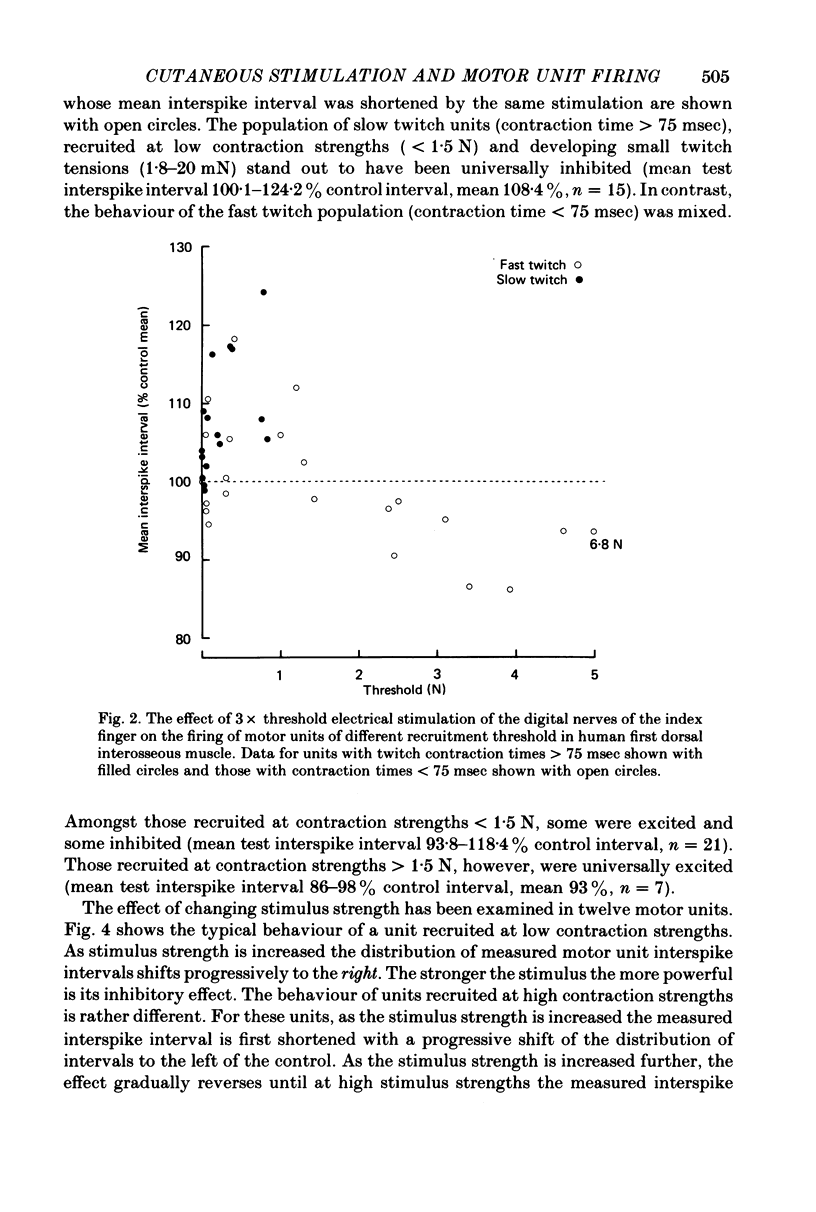
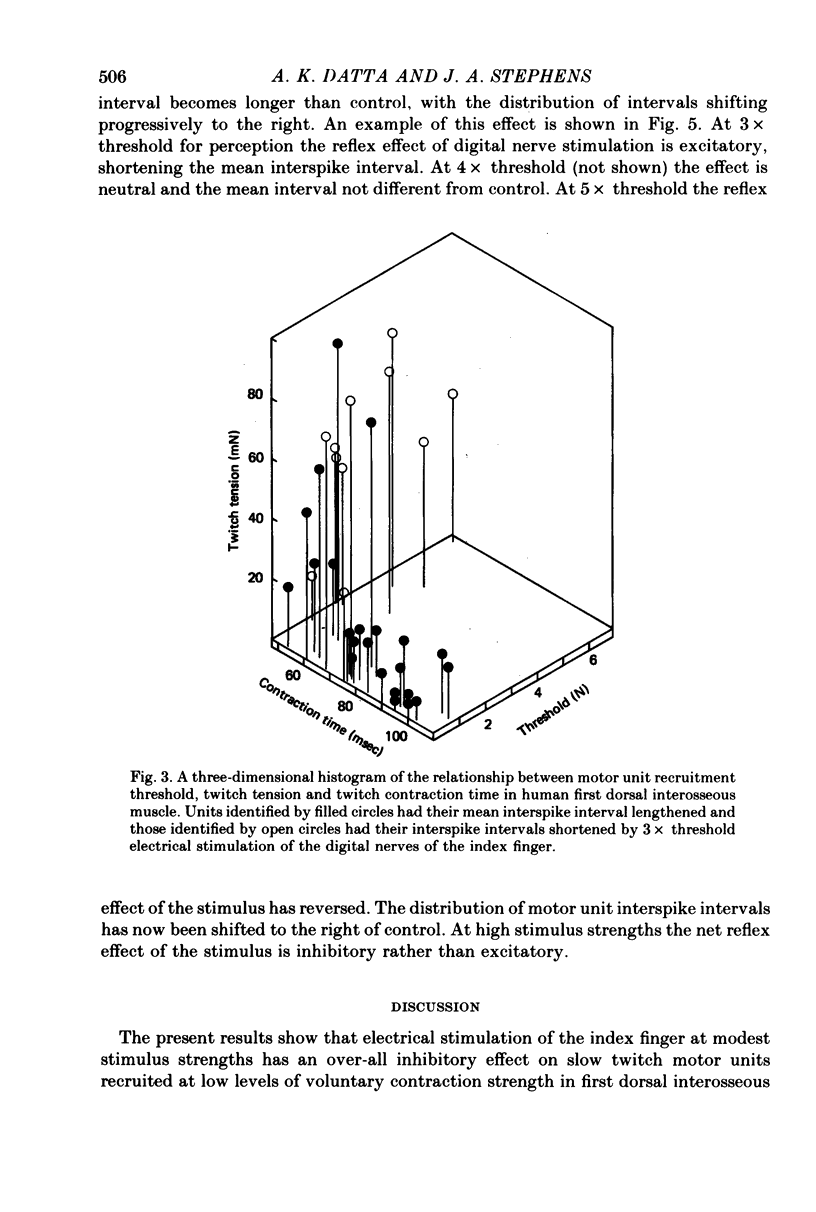



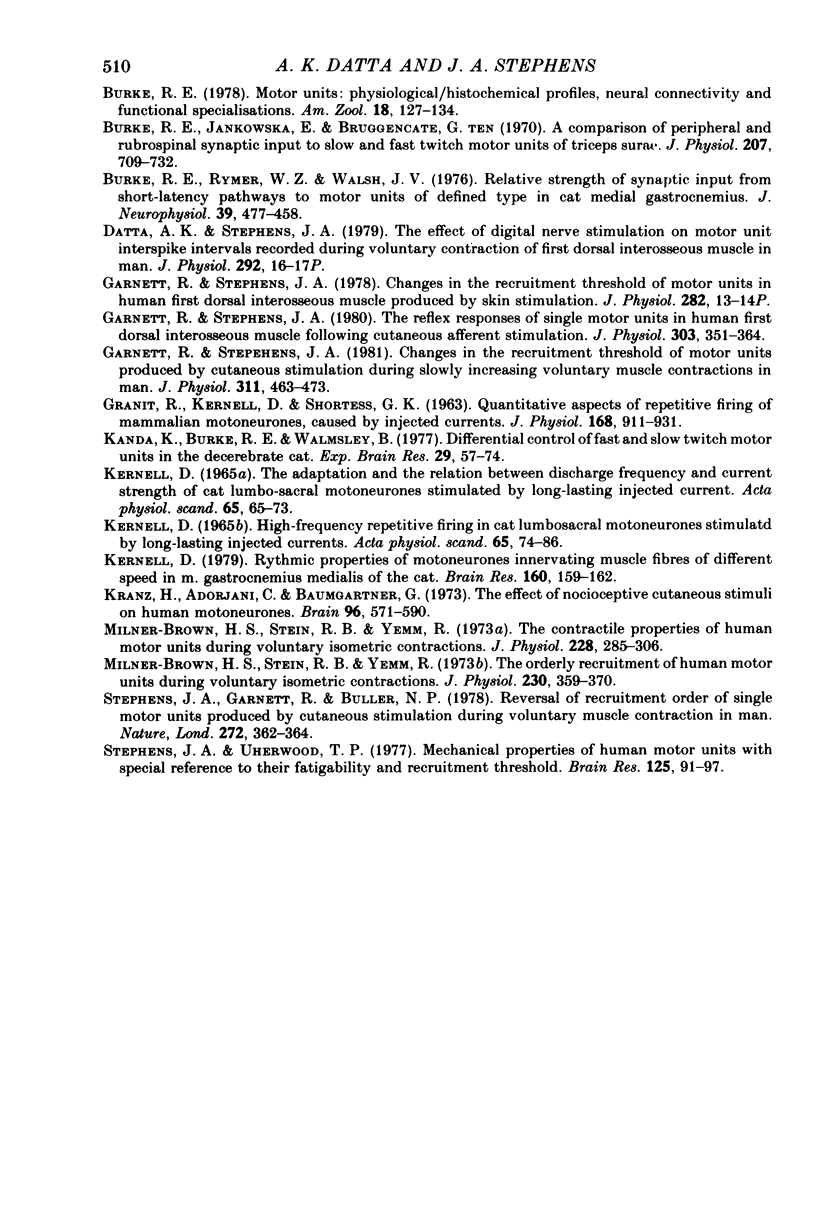
Selected References
These references are in PubMed. This may not be the complete list of references from this article.
- Buller N. P., Garnett R., Stephens J. A. The use of skin stimulation to produce reversal of motor unit recruitment order during voluntary muscle contraction in man [proceedings]. J Physiol. 1978 Apr;277:1P–2P. [PMC free article] [PubMed] [Google Scholar]
- Burke R. E., Jankowska E., ten Bruggencate G. A comparison of peripheral and rubrospinal synaptic input to slow and fast twitch motor units of triceps surae. J Physiol. 1970 May;207(3):709–732. doi: 10.1113/jphysiol.1970.sp009090. [DOI] [PMC free article] [PubMed] [Google Scholar]
- Burke R. E., Rymer W. Z. Relative strength of synaptic input from short-latency pathways to motor units of defined type in cat medial gastrocnemius. J Neurophysiol. 1976 May;39(3):447–458. doi: 10.1152/jn.1976.39.3.447. [DOI] [PubMed] [Google Scholar]
- Datta A. K., Stephens J. A. The effect of digital nerve stimulation on motor unit interspike intervals recorded during voluntary contraction of first dorsal interosseous muscle in man [proceedings]. J Physiol. 1979 Jul;292:16P–17P. [PubMed] [Google Scholar]
- GRANIT R., KERNELL D., SHORTESS G. K. QUANTITATIVE ASPECTS OF REPETITIVE FIRING OF MAMMALIAN MOTONEURONES, CAUSED BY INJECTED CURRENTS. J Physiol. 1963 Oct;168:911–931. doi: 10.1113/jphysiol.1963.sp007230. [DOI] [PMC free article] [PubMed] [Google Scholar]
- Garnett R., Stephens J. A. Changes in the recruitment threshold of motor units in human first dorsal interosseous muscle produced by skin stimulation [proceedings]. J Physiol. 1978 Sep;282:13P–14P. [PubMed] [Google Scholar]
- Garnett R., Stephens J. A. Changes in the recruitment threshold of motor units produced by cutaneous stimulation in man. J Physiol. 1981 Feb;311:463–473. doi: 10.1113/jphysiol.1981.sp013598. [DOI] [PMC free article] [PubMed] [Google Scholar]
- Garnett R., Stephens J. A. The reflex responses of single motor units in human first dorsal interosseous muscle following cutaneous afferent stimulation. J Physiol. 1980 Jun;303:351–364. doi: 10.1113/jphysiol.1980.sp013290. [DOI] [PMC free article] [PubMed] [Google Scholar]
- Kanda K., Burke R. E., Walmsley B. Differential control of fast and slow twitch motor units in the decerebrate cat. Exp Brain Res. 1977 Aug 8;29(1):57–74. doi: 10.1007/BF00236875. [DOI] [PubMed] [Google Scholar]
- Kernell D. Rhythmic properties of motoneurones innervating muscle fibres of different speed in m. gastrocnemius medialis of the cat. Brain Res. 1979 Jan 5;160(1):159–162. doi: 10.1016/0006-8993(79)90612-7. [DOI] [PubMed] [Google Scholar]
- Kranz H., Adorjani C., Baumgartner G. The effect of nociceptive cutaneous stimuli on human motoneurons. Brain. 1973 Sep;96(3):571–590. doi: 10.1093/brain/96.3.571. [DOI] [PubMed] [Google Scholar]
- Milner-Brown H. S., Stein R. B., Yemm R. The contractile properties of human motor units during voluntary isometric contractions. J Physiol. 1973 Jan;228(2):285–306. doi: 10.1113/jphysiol.1973.sp010087. [DOI] [PMC free article] [PubMed] [Google Scholar]
- Milner-Brown H. S., Stein R. B., Yemm R. The orderly recruitment of human motor units during voluntary isometric contractions. J Physiol. 1973 Apr;230(2):359–370. doi: 10.1113/jphysiol.1973.sp010192. [DOI] [PMC free article] [PubMed] [Google Scholar]
- Stephens J. A., Garnett R., Buller N. P. Reversal of recruitment order of single motor units produced by cutaneous stimulation during voluntary muscle contraction in man. Nature. 1978 Mar 23;272(5651):362–364. doi: 10.1038/272362a0. [DOI] [PubMed] [Google Scholar]
- Stephens J. A., Usherwood T. P. The mechanical properties of human motor units with special reference to their fatiguability and recruitment threshold. Brain Res. 1977 Apr 8;125(1):91–97. doi: 10.1016/0006-8993(77)90361-4. [DOI] [PubMed] [Google Scholar]


